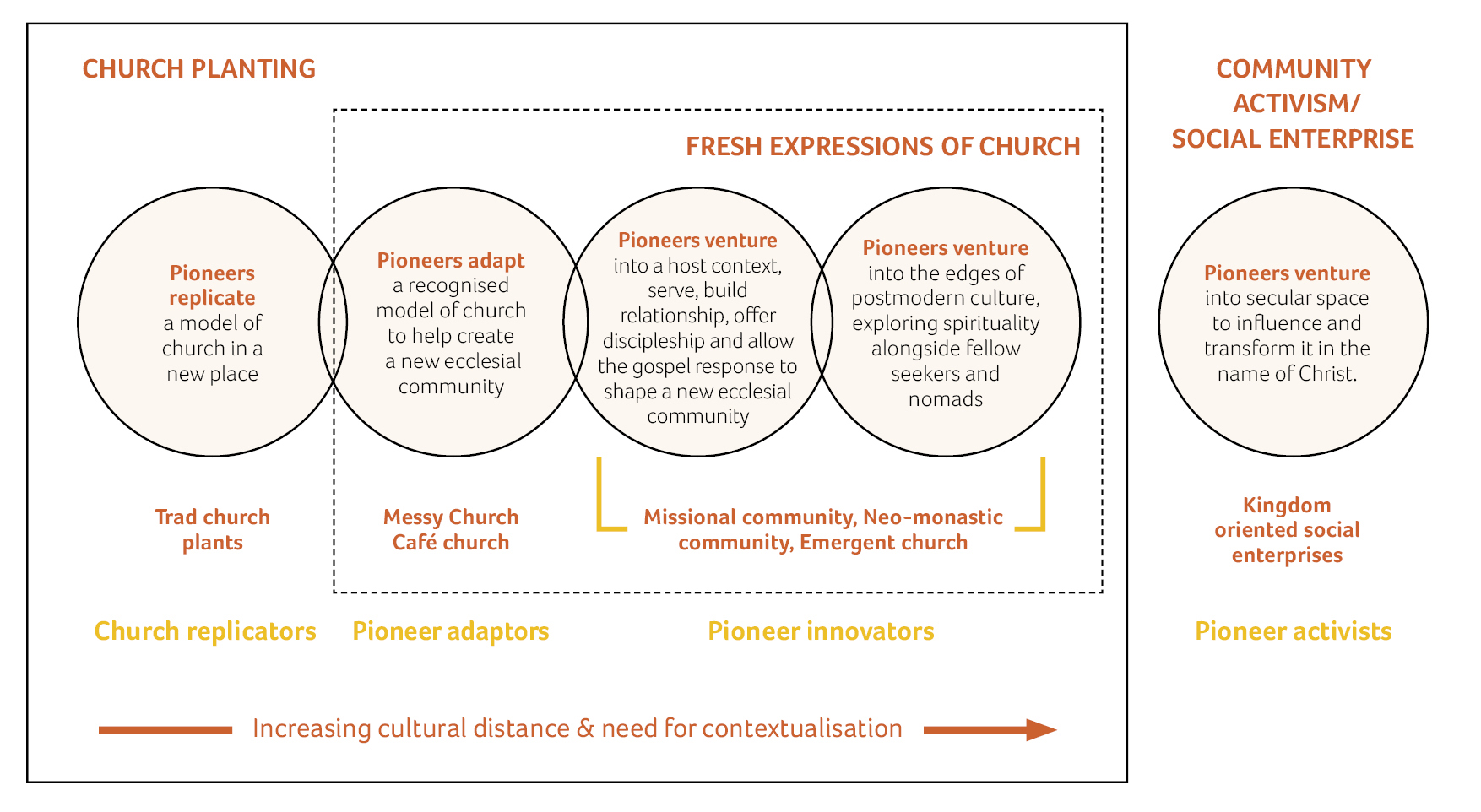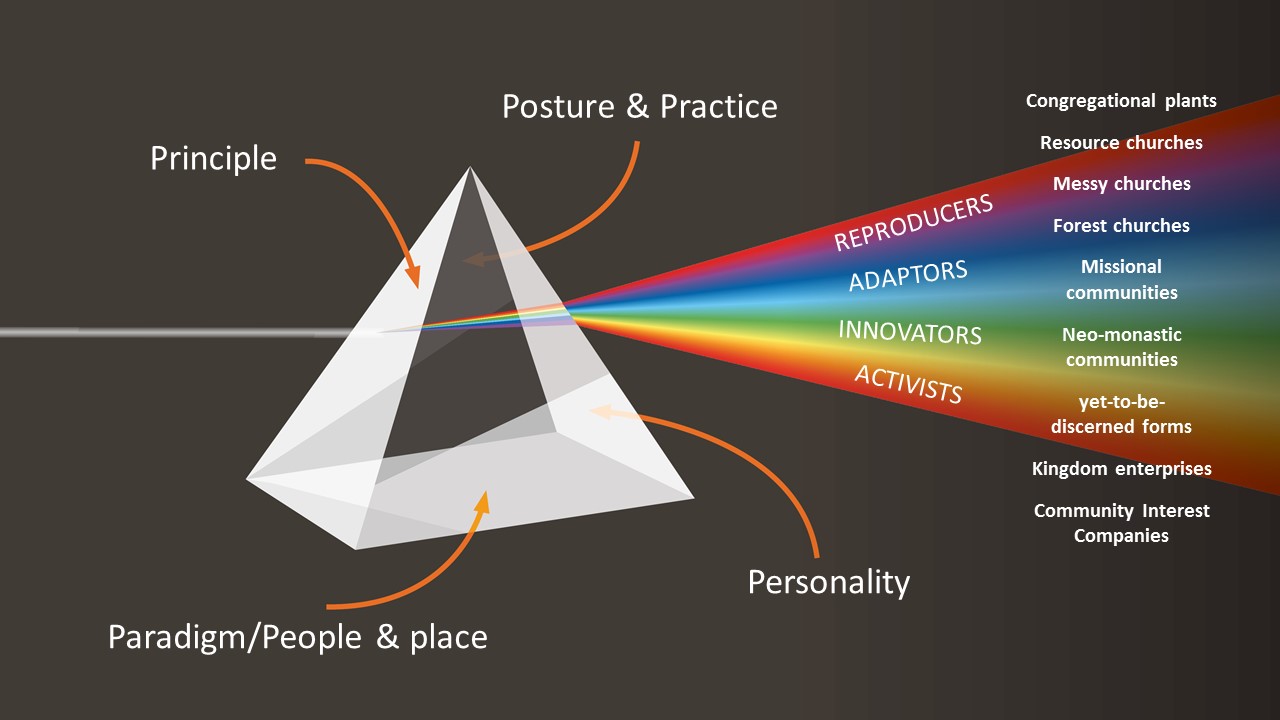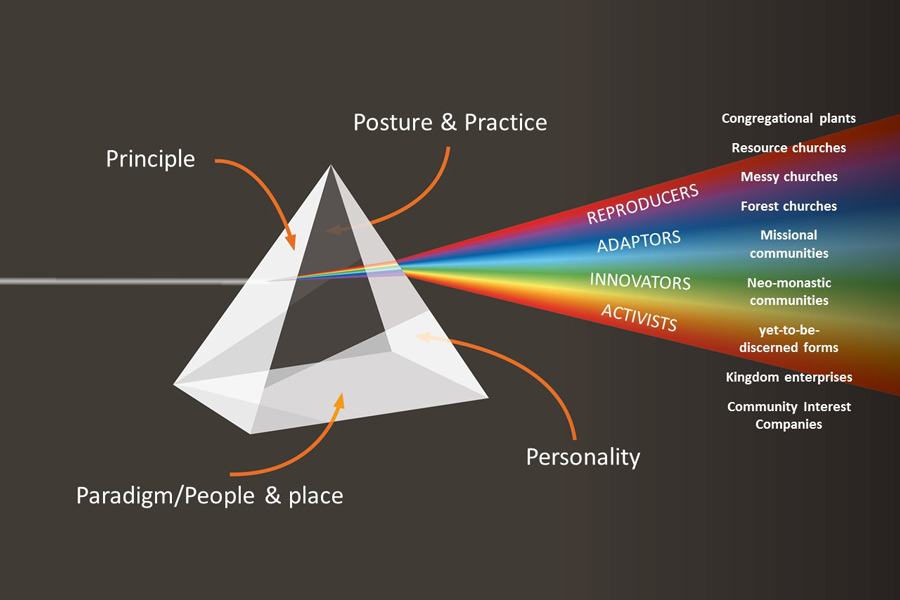The creators of the Pioneer Spectrum, Paul Bradbury and Tina Hodgett, reflect on the popularity and the flaws of this diagram and how they have been working to develop it into a useful missional tool.
Since the pioneer spectrum was published in 2018 it has been widely shared, discussed and used. A good diagram works when it acts as a lens to help people understand their reality and therefore as a tool to enable engagement with reality. Any diagram however flirts with the danger of being seen as a definition of reality. A diagram has a metaphorical quality, it both ‘is and is not’ a representation of people’s experience. The degree to which a diagram or metaphor ‘fits’ with people’s experience is a measure of its imaginary power – however despite this there is an edge beyond which the metaphor ceases to ‘work’.
- Principle – this is the lens of our theological assumptions; for example, our beliefs and convictions about God and how God can be known, about the nature of the church and its relationship with the Kingdom of God and the world. These have a huge impact on our practice (though of course they are also informed and shaped by practice).
- Posture and Practice – this is the lens that describes our missional stance in the world and our practice within it. For example, is our approach about creating church, or growing the Kingdom? How do we create church? Do we begin with a congregation from the start? Or enable something new to emerge over time? What is the relationship between our ministry and our tradition?
- Personality – this lens explores how people are wired, particularly in relationship to missional leadership. Is leadership directive or facilitative? Is it more about application or innovation? What are the preferred metrics of success? What relationship with the established church does the leader feel most comfortable with?
- Paradigm/People and Place – this lens is really a composite of two lenses:
- Paradigm – this refers to the cultural paradigm(s) that shape a context. In what ways is a postmodern, modern or premodern mindset and worldview expressed in this place?
- People & Place – this refers to the basic information about a context. What type of people live there? Young, old, rich, poor, educated, less-educated etc? It also invites reflections on diversity and political convictions.


